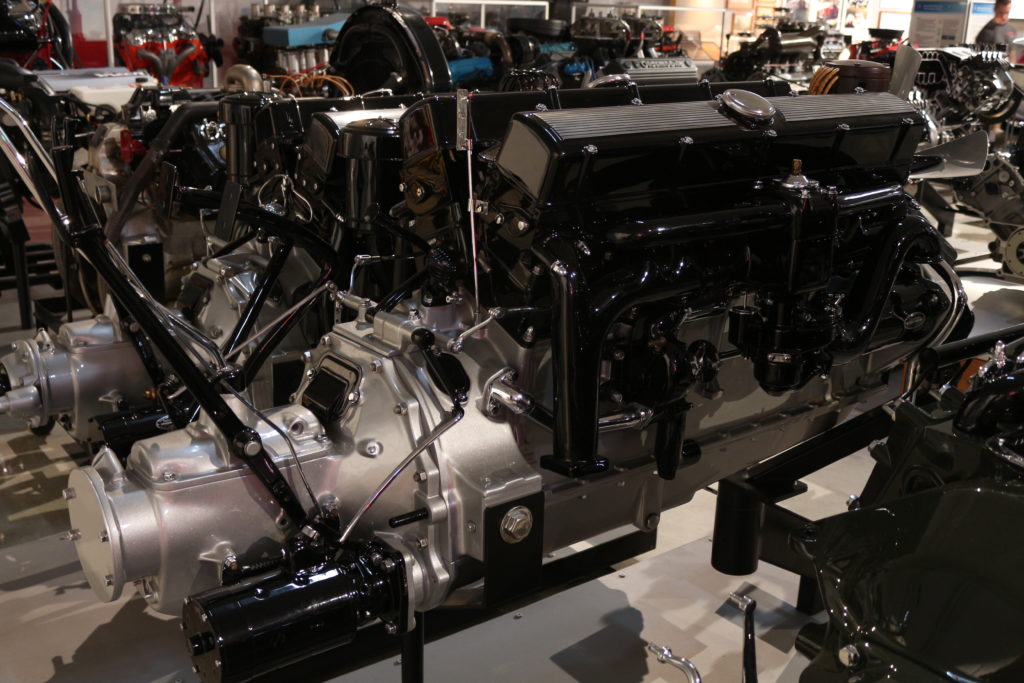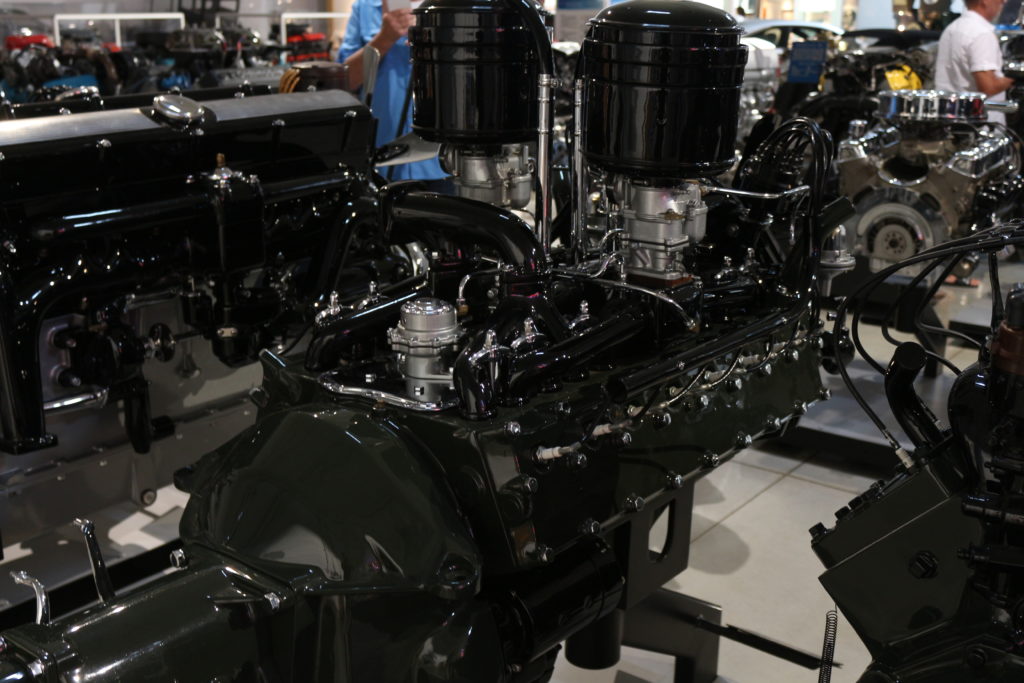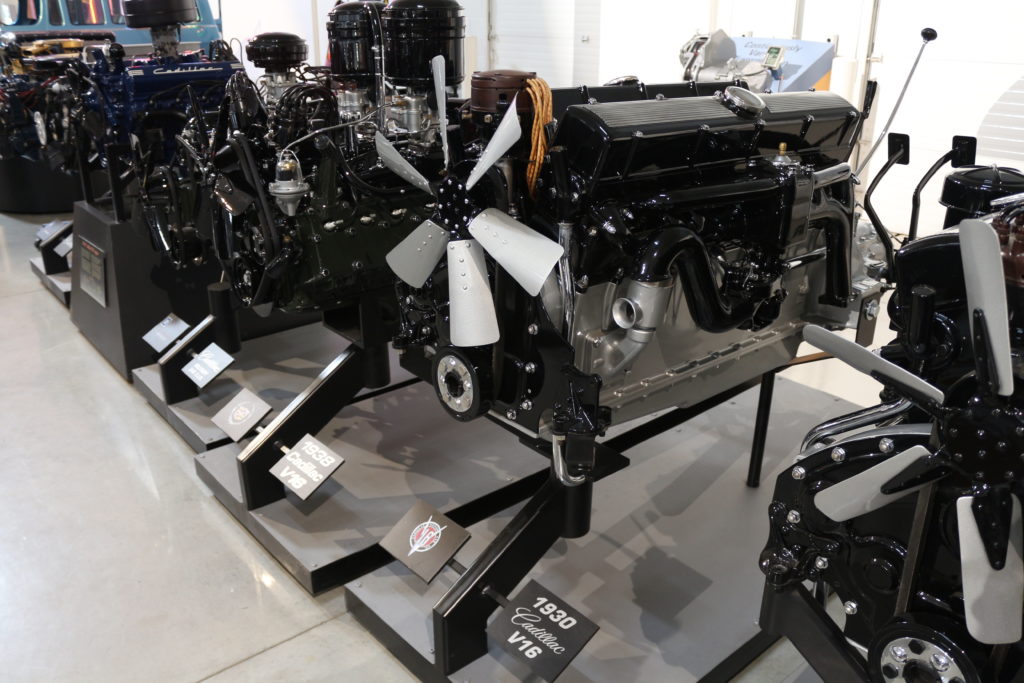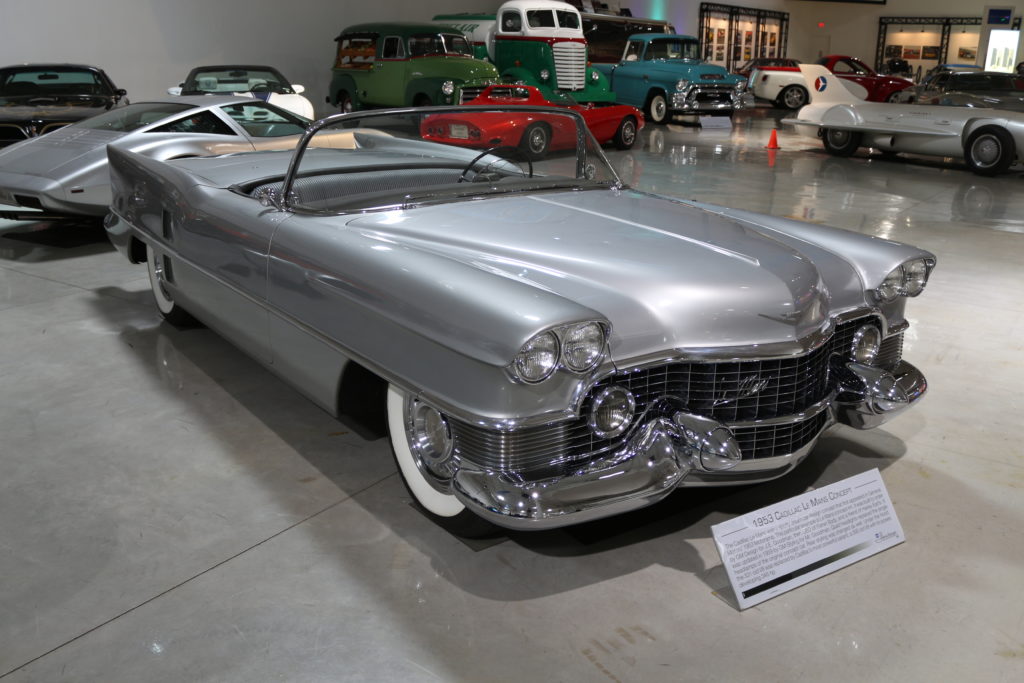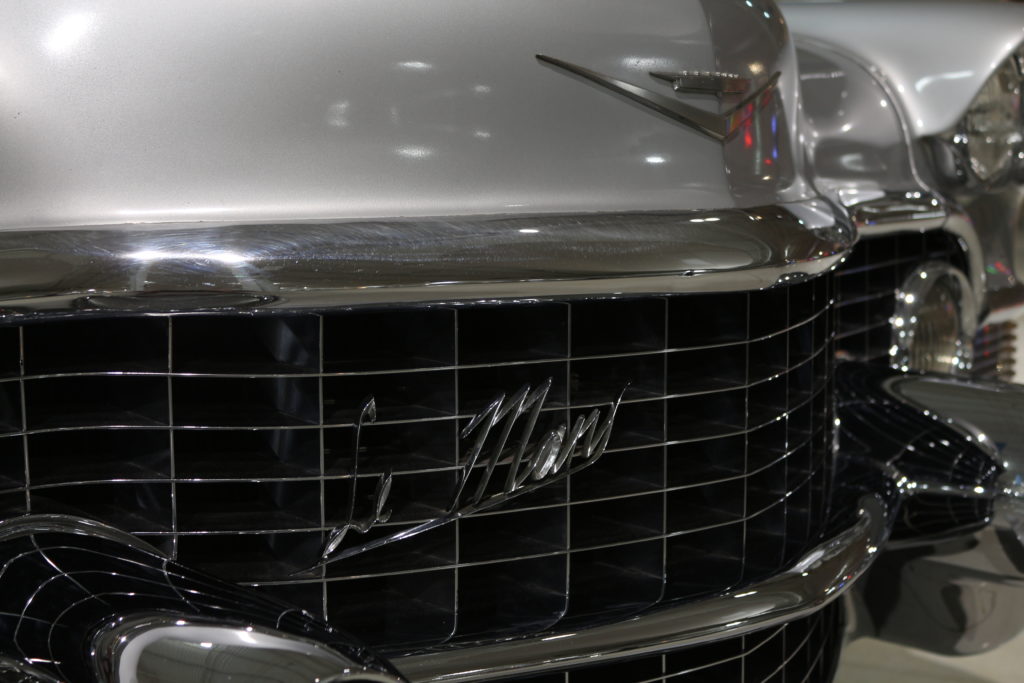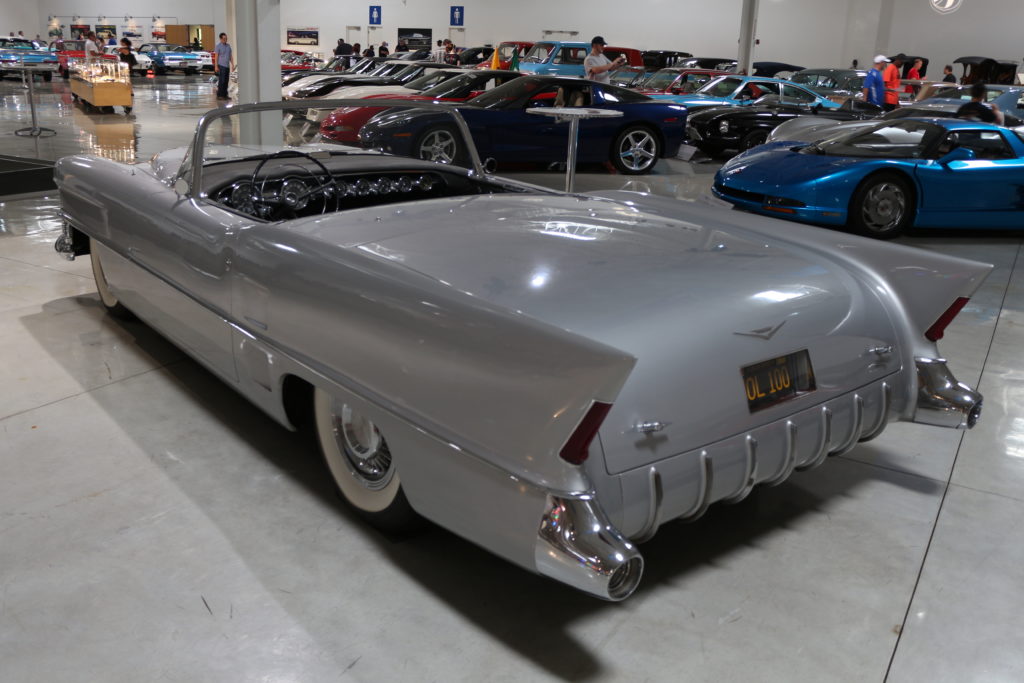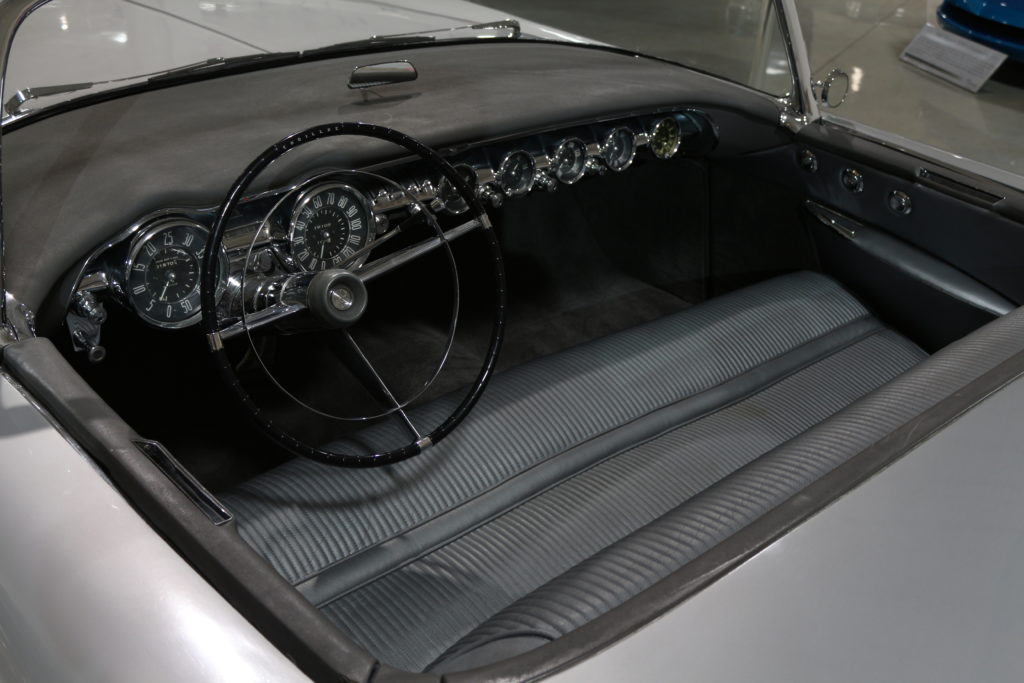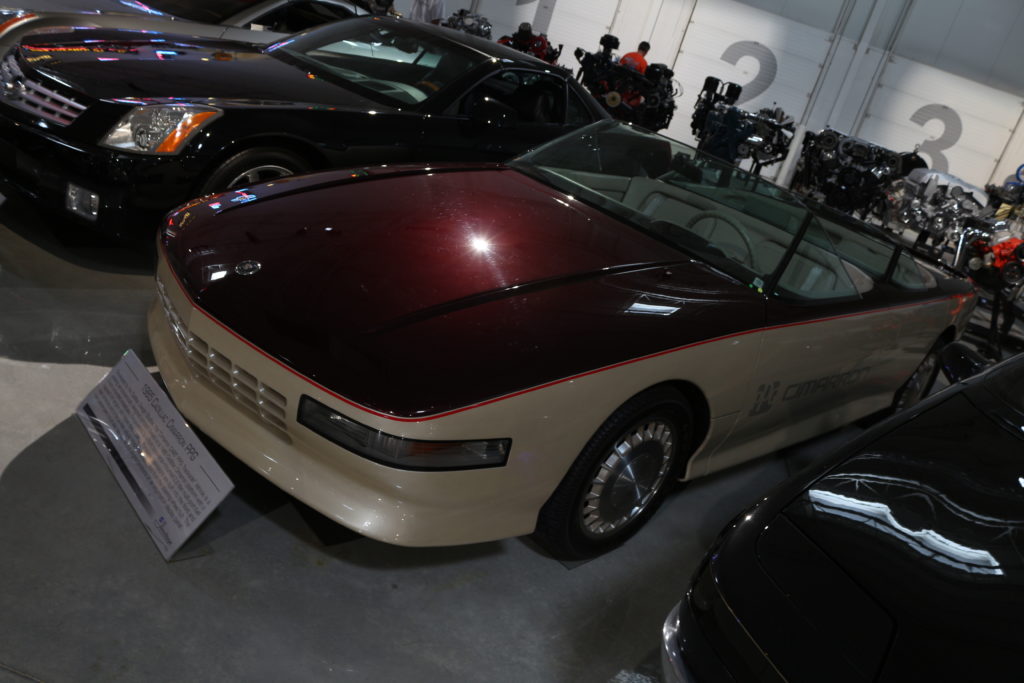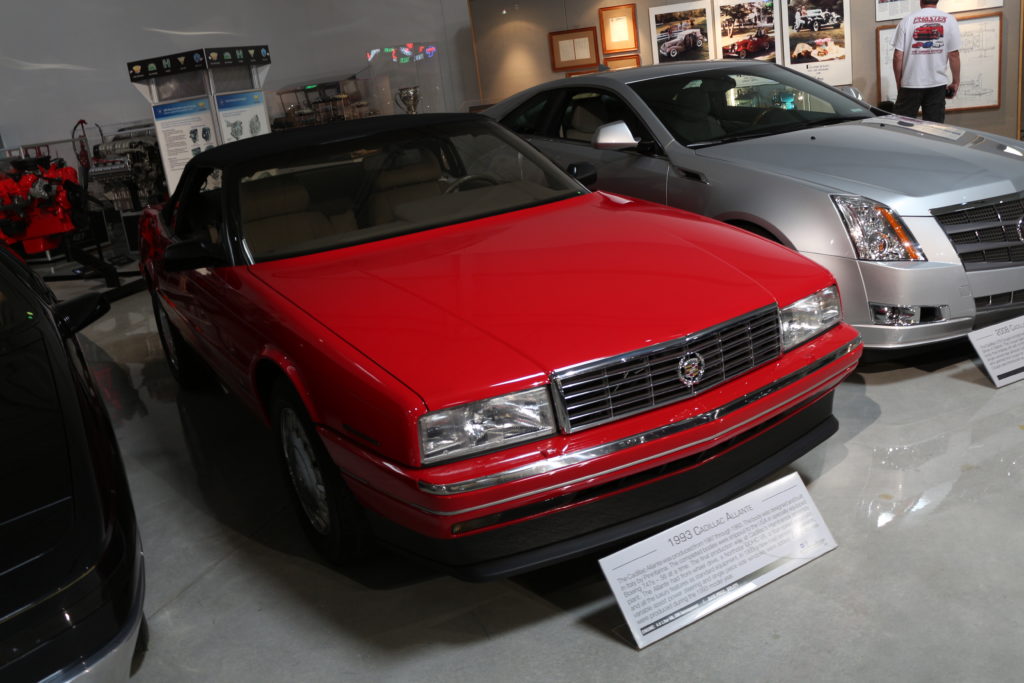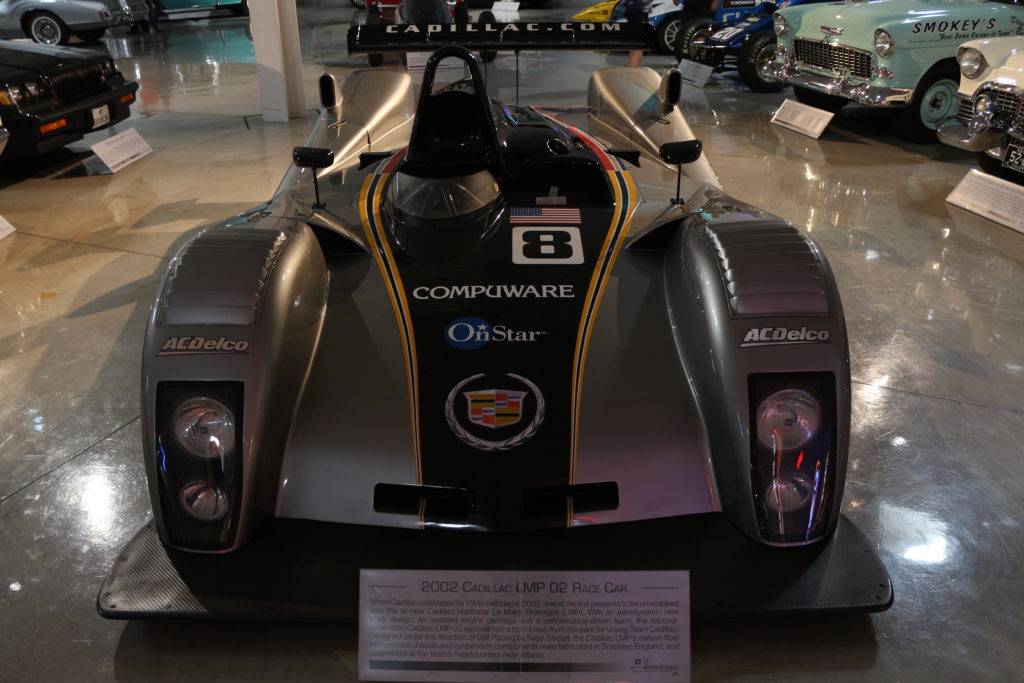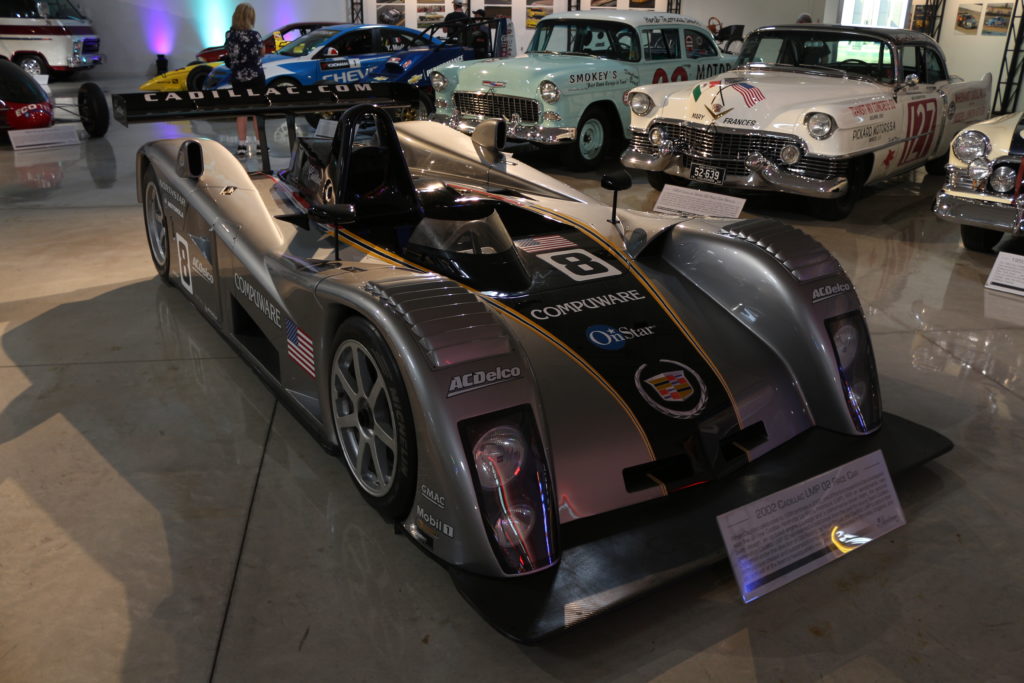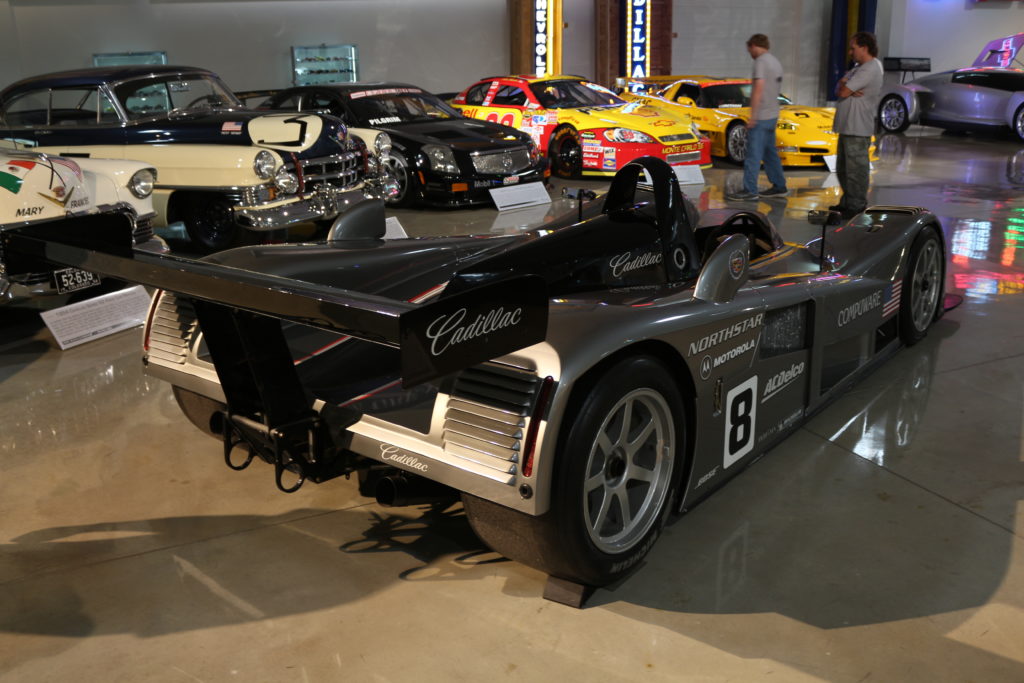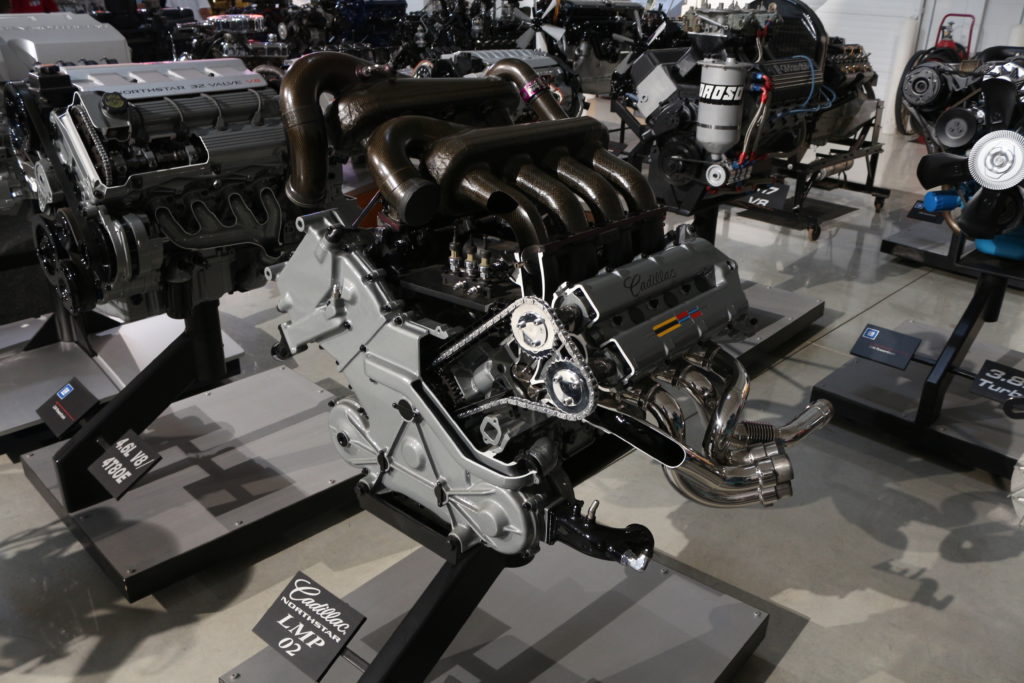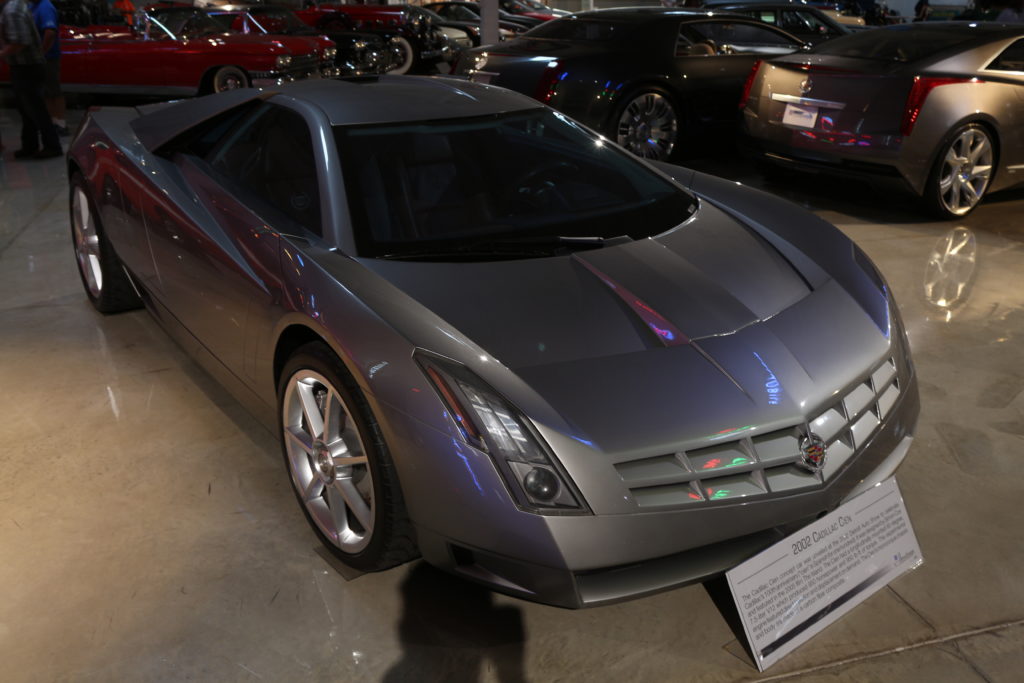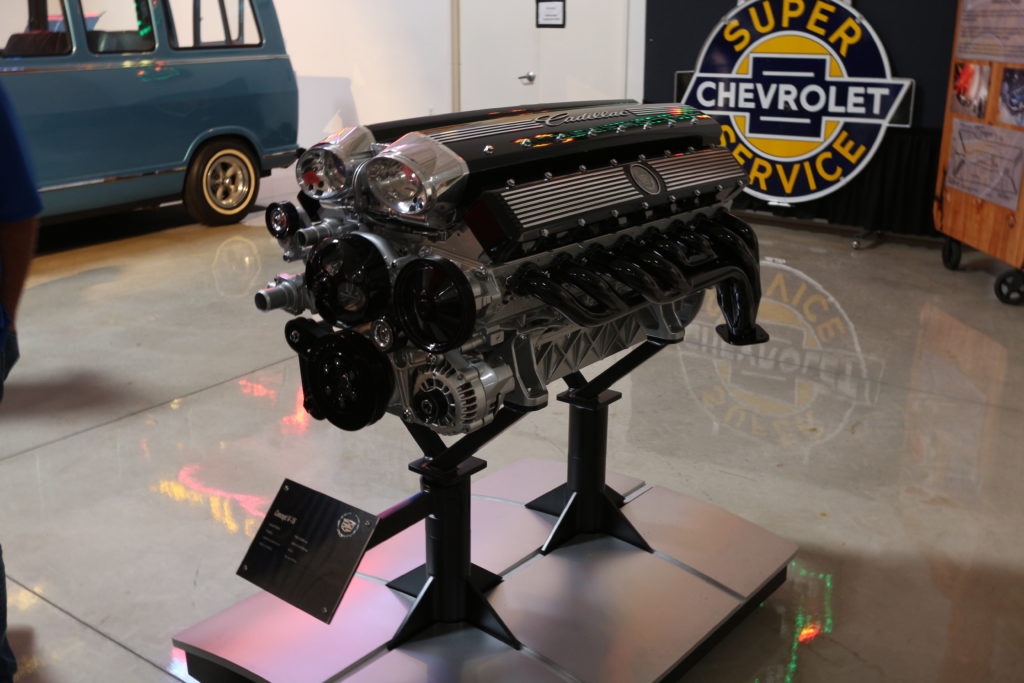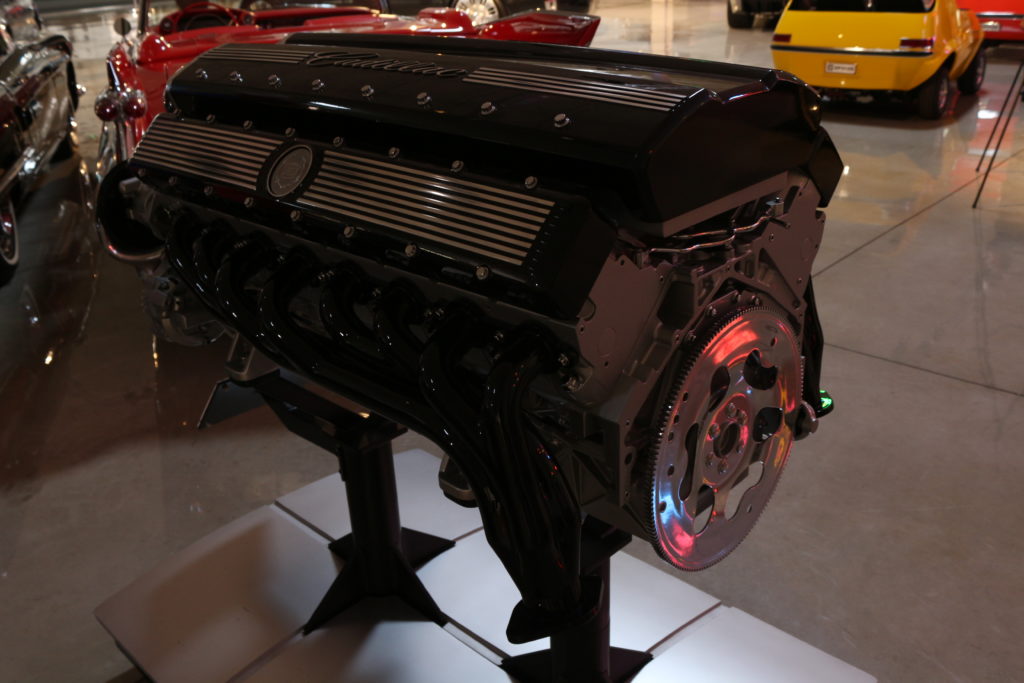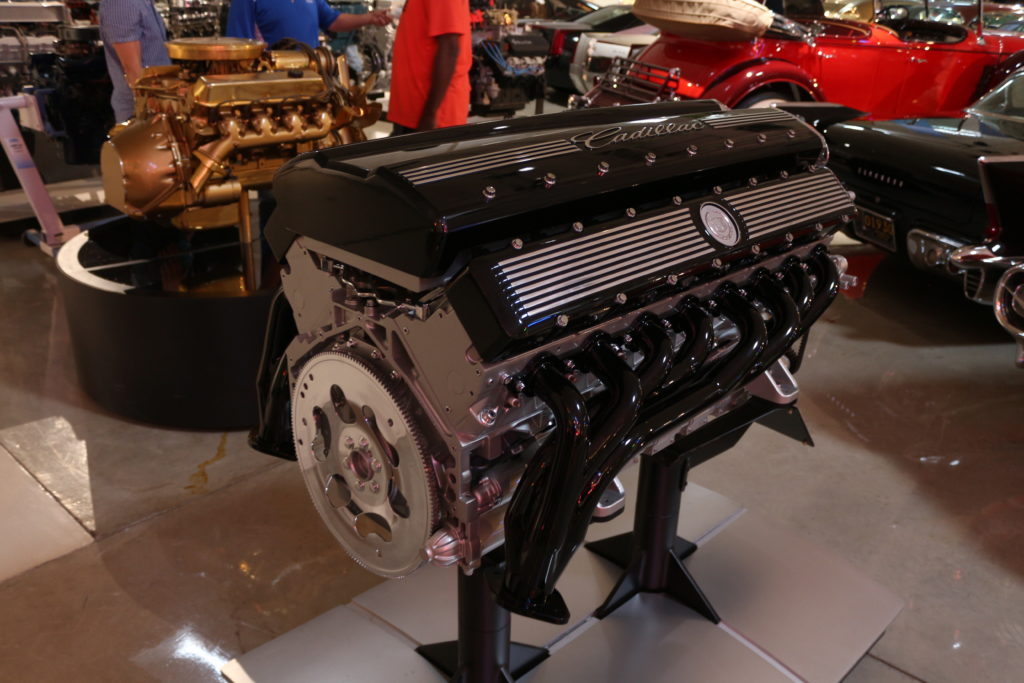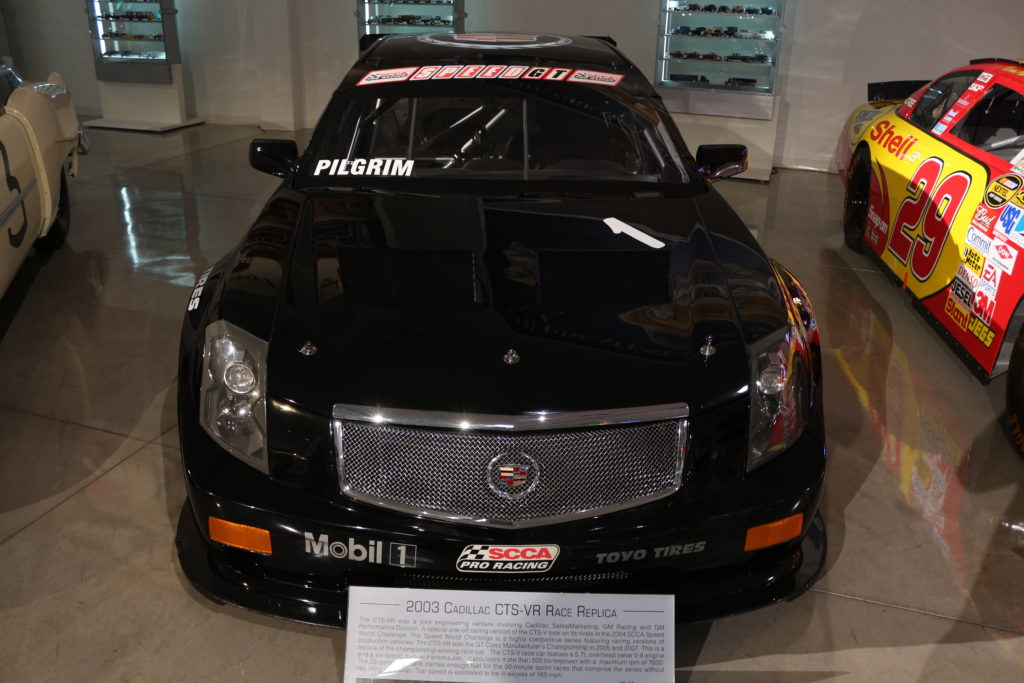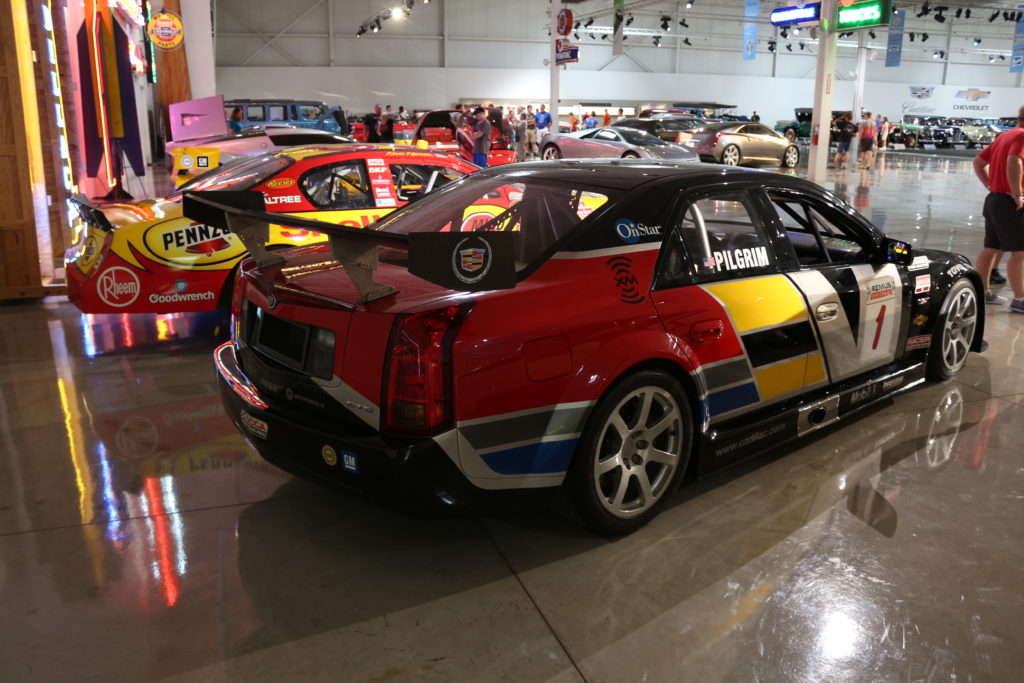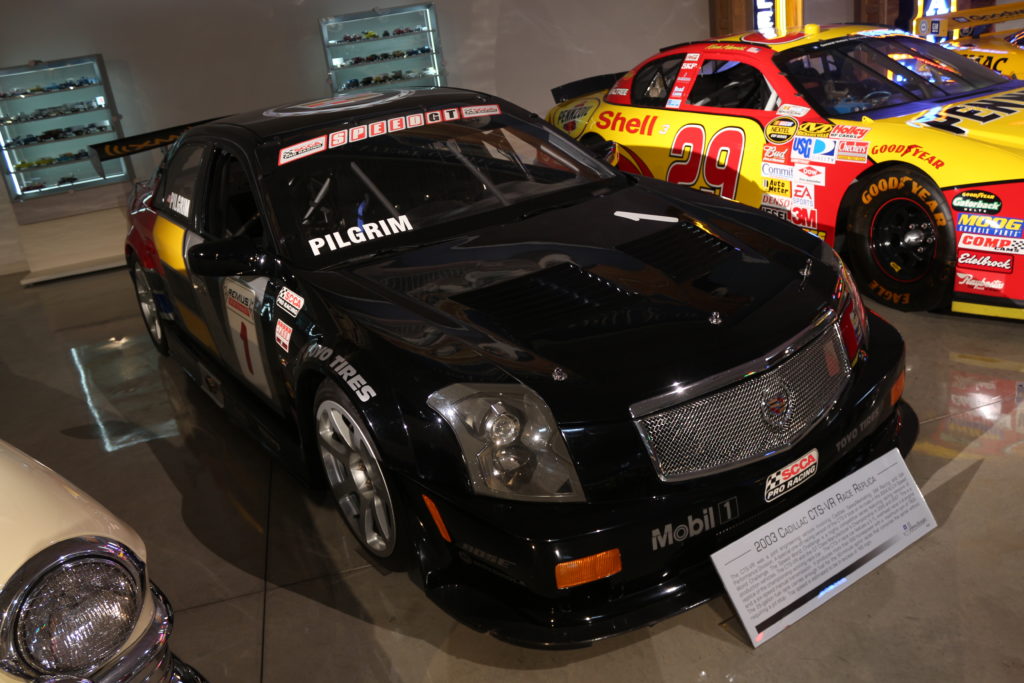Cadillacs of GM Heritage Center: Luxobarges, Concepts, Racers and V16 Engines. An Abridged History on the Rise, Fall and Reincarnation of Cadillac.
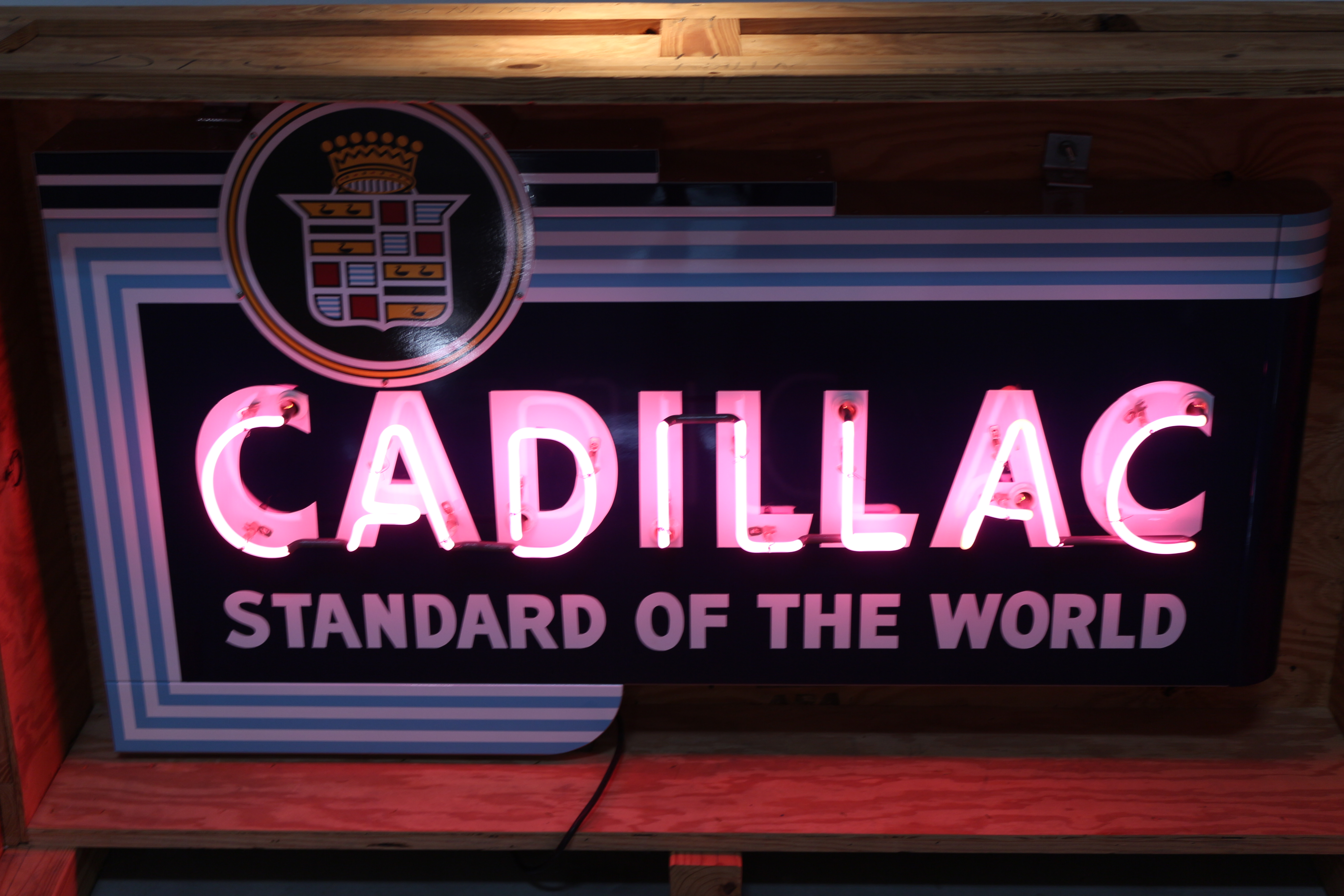
Cadillacs are the standard of the world, in luxury, motorsport and innovation.
Since its founding in 1902, Cadillac has represented American luxury and innovation. By the time it was absorbed into General Motors in 1909, it offered excellence in engineering through a streamlined assembly process and, among other things, prominent use of the V8 engine.
Funnily enough, however, is that the most classic Cadillac on display was neither a car, nor a V8. In fact, below is the Cadillac Series 452 engine. This V16 behemoth derives its name from the 452 cubic inches (7.4L) that it displaces. Notice how close the heads are to each other, in order to package it into contemporary Cadillac chassis it had to be narrow, so it’s a 45 degree vee. With its 5.5:1 compression ratio, it produced about 165 horsepower and 320 lb-ft of torque, while being devilishly smooth all the way up to the stratospheric 3,500RPM redline. This would have been found in several Cadillacs through the 1930s.
The second picture features the later Series 90 V16. In a matter of a few years, the design was radically altered. Again, as a result of packaging constraints this engine was designed to be unusually wide, with its 135 degree vee design. It displaces a mere 431 cubes (7.1L) and was touted as being extremely smooth to the dizzying heights of 3,700RPM.
[Click on the images for full-size resolution.]
Sadly for us, or at least for me, there were no truly vintage Cadillacs on display at the GM Heritage Center during our visit. However, this 1953 Cadillac Le Mans concept represents the pinnacle of 1950s American styling. Tail fins, white walls covered by low fenders and a lot of brightwork are signature styling elements of the period.
[Click on the images for full-size resolution.]
This car originally appeared in General Motors 1953 Motorama. After being privately purchased afterwards, it was then updated by GM in 1959. The single headlights were updated to the quad-style lights, much like the evolution of the contemporary Corvette. In the back, the rear end was massaged outwards into the more aggressive “tail fin” design that was in vogue at the time. Additionally, the 331CID (5.4L) V8 was replaced with the newer 390CID (6.4L) V8. Dubbed the “‘Tri-Power” V8, it offered up 345 horsepower.
Cadillac enjoyed a broad period of success and recognition as the standard-bearer of American luxury. However, there cannot be light without the darkness.
The downfall of American luxury begins here.
This next one is something of an ironic joke. Yes, this is the 1970 Cadillac 500CID (8.2L) V8. Originally rated at 400 horsepower and 550 lb-ft of torque, it was a top of the line engine and featured in the Eldorado. However, throwing gold paint on this leviathan is ironic, as the 500 was critically strangled and choked to death by the crude pollution control instruments of the time. By the end of its run in 1976 it produced a wheezy 190 horsepower, or 210 if you opted for fuel-injection.

The rough patch in the history of Cadillac continued. Pollution control devices strangled the old school American mantra of performance. Combined with two massive energy crisis in 1973 and 1979, American excess in the form of big cubic inches began to wither. The American buyer became conscious of conspicuous consumption, making massive luxobarges with enormous engines an endangered species. Small cars and fuel economy came into the public forum and Cadillac knew it would be left behind without change.
As the groovy 1970s transitioned into the forward-looking futurism of the 1980s Cadillac began to change. Front-wheel drive came to prominence, offering better packaging and interior space. However, unlike the Japanese who came out swinging with sport compacts, Cadillac offered something different.
Built on the J-Body platform (think Chevy Cavalier), the Cadillac Cimarron was the brand attempting to match consumer requests, and missing the mark entirely. Like a Midwestern Atomic Blonde, eventually, the roots began to show through. Consumers coudn’t look beyond the baby Cadillac’s humble roots. And much like our middle class hip mom who waited a few weeks too long to get her roots touched up, the paint by PPG couldn’t this 1985 Cimarron, the jig was up and the public knew the truth.
[Click on the images for full-size resolution.]
Let the record show that this also coincided with GM’s disastrous V8 diesel epidemic. Corporate cost cutting resulted in General Motors engineers attempting to convert regular Small Block V8 engines to run on diesel, hoping for improved fuel economy. It worked, briefly, until crankshafts began splitting apart, rods broke and pistons went through engine blocks.
Pictured beside the ill-fated Cimarron is the middle ground. This 1993 Cadillac Allanté is the calm before the storm, or more accurately, between it. It followed the lashings of failure and inadequacy of the 1980s, yet it clearly represents the cursory period before the Cadillac brand resurgence that followed.
The Allanté was a vehicle geared towards the ultra premium segment. Indeed, it’s $60,000 price tag was eye-watering at the time. Sales were slow, but not awful, at least initially. However, it showed intent and that the brand had a pulse. The past failures of Cadillacs prior began to fade as Americans began to rethink Cadillac’s role in American luxury.
Of course, the game changer, and the one Cadillac model to save the brand, isn’t here. Not now, but it will be, one day. The Cadillac Escalade catapulted the brand into relevancy. The year 1999 brought us both the Escalade, and Cadillacs Art and Science design philosophy. By the year 2000 Cadillac had regained its stride. The brand had returned to being a leader in design and technology, road and track.
[Click on the images for full-size resolution.]
Cadillac came out swinging in motorsport. Pictured above is their 2002 Cadillac Northstar LMP 02 car. Originally penned in, you guessed it, the year 2000 the Northstar LMP project showcased Cadillacs attempt at getting back into the American Le Mans Series (ALMS), and a shot at the 24 Hours of Le Mans. However, as awesome as this was, and it is incredibly awesome, this project was short lived. In fact, 2002 marks the last year for the program.
Don’t lament, because on this upswing of an American revolution (sorry, that’s Chevys old slogan), Cadillac simply couldn’t and wouldn’t be stopped. Stunning design concepts began flowing from the brand, invoking the desire and status that had long been missing. Here is the 2002 Cien concept. I remember seeing this car in poster form on several friends bedroom walls.
The engine you see here is a modern Cadillac V16. Looking to the future and embracing its past this 13.6 liter, 32-valve V16 powered the even more stunning Cadillac Sixteen concept of 2003. Derived from the Gen IV LS V8 architecture, it was a stunning throwback to style, prominence and power.
[Click on the images for full-size resolution.]
It wasn’t just concepts, Cadillac was everywhere and really could not be stopped. In fact, the reason they curtailed their LMP project in 2002 was to re-brand Cadillac Racing and focus on something else, something with more brand recognition.
2003 saw the release of the Cadillac CTS, the sedan which would become Cadillacs base for road and race performance. It was the first Cadillac production vehicle to be penned fully upon the aforementioned Art and Science design language. The CTS is aggressive and angular, with distinctly rear-wheel drive proportions that brought a level of sportiness that had been missing from the brand.
Alongside the CTS road car came the CTS-VR race car. Designed to compete in SCCA Pro Racing, it took home the GT Class Manufacturer’s Championship in 2005 and 2007. Using a modified LS6 engine, it revved to 7,600RPM and was no terribly far removed from the 2004+ CTS-V road car on which it was based.
[Click on the images for full-size resolution.]
That, of course, segues us into Cadillac V, the American performance brand that doles out the hurt to the German rivals like BMW M, Mercedes AMG and Audi RS. The original CTS-V, the first to wear the badge, utilized the 400 horsepower LS6 V8 from the C5 Corvette Z06 and featured other typical hotrodder tricks like stiffened spring rates, bigger sway bars, better shocks and a limited-slip differential* (admittedly, a sore spot for first gen V owners).
There have since been two successive generations of the CTS-V, each progressively faster, more powerful and more capable. Of course, it hasn’t just been the CTS-V, either. A Corvette-based XLR, STS and the latest Caddy, the ATS, have all also been given the V treatment.
Since the CTS-VR, Cadillac Racing has brought the V insignia to Pirelli World Challenge with the ATS-V.R and to IMSA with its prototype race car, the DPi-V.R. The former took home the Drivers’ Championship in 2015, it’s debut season. The latter won the Daytona 24 Hours race on the first shot, and swept the podium, with 1st, 2nd and 3rd place finishes, at the 12 Hours of Sebring race.
That brings us tidily to the present. Cadillac has emerged, and is producing vehicles that are truly world class, going toe-to-toe with the finest European metal. Brand perception is indeed very different than it was just years prior. The brand has brought back its core values and embraced what made a Cadillac, a Cadillac: luxury, motorsport and innovation.

